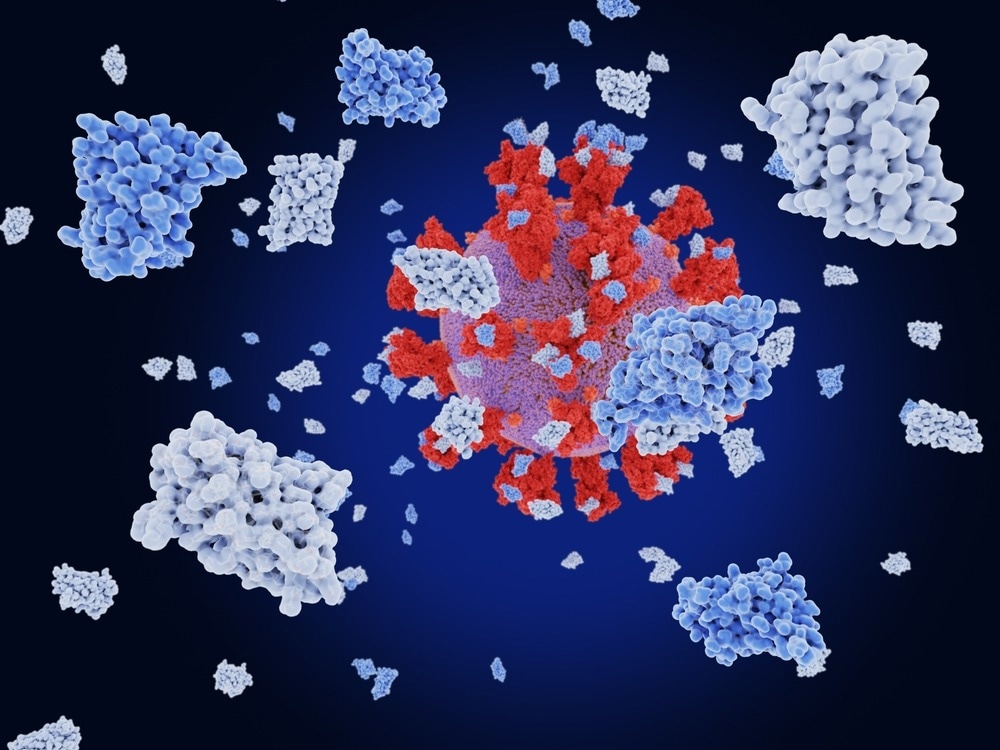In a recent study posted to the bioRxiv* preprint server, researchers investigated nanobody engineering to develop antivirals and diagnostic tools against severe acute respiratory syndrome coronavirus 2 (SARS-CoV-2).
 Study: Nanobody engineering for SARS-CoV-2 neutralization and detection. Image Credit: Juan Gaertner/Shutterstock
Study: Nanobody engineering for SARS-CoV-2 neutralization and detection. Image Credit: Juan Gaertner/Shutterstock

 *Important notice: bioRxiv publishes preliminary scientific reports that are not peer-reviewed and, therefore, should not be regarded as conclusive, guide clinical practice/health-related behavior, or treated as established information.
*Important notice: bioRxiv publishes preliminary scientific reports that are not peer-reviewed and, therefore, should not be regarded as conclusive, guide clinical practice/health-related behavior, or treated as established information.
Background
The worldwide effort to contain the recent coronavirus disease 2019 (COVID-19) pandemic has resulted in the development of many antibody-based therapeutic and diagnostic technologies ranging from rapid antigen tests to monoclonal antibodies in treating severe COVID-19 symptoms.
Many monoclonal antibodies and COVID-19 vaccines target the SARS-CoV-2 spike protein due to its role in host-cell membrane binding and viral entry. Recent studies have shown that mutations in the receptor binding domain (RBD) of the S1 subunit of the spike protein result in the emergence of new variants that challenge the efficacy of existing monoclonal antibodies and COVID-19 vaccines.
Current research against the immune evasion exhibited by some of the new SARS-CoV-2 variants is focused on developing new antibody-based technology such as camelid single-domain antibody fragments or nanobodies. While a few SARS-CoV-2-neutralizing nanobodies have been characterized, the use of nanobodies in diagnostic tools remains largely unexplored.
About the study
In the present study, the researchers engineered multimodular nanobodies by fusing nanobody domains that bind to different binding sites. These domains were fused using 20 amino acid flexible linkers and could simultaneously bind to different epitopes, increasing the binding strength and potentially reducing immune escape by the emerging variants.
Combinations of four previously developed monomeric nanobodies were used to generate three trimodular nanobodies — tri-Ty1, tri-TMH, and tri-TMV. Neutralization assays were carried out in vitro to test the neutralization potency of the multimodular nanobodies against wild-type SARS-CoV-2 and the Alpha, Beta, Delta, and Omicron variants. An antigen microarray was used to understand how amino acid changes in the RBD influence the binding of the three trimodular nanobodies.
Furthermore, the modular properties of nanobodies were used to develop a diagnostic assay consisting of RBD-binding nanobodies fused with split fragments of the engineered fluorescent luciferase protein NanoLuc, which acts as the signal molecule. The diagnostic assay is based on the principle that when the split fragments of NanoLuc are brought into proximity by the binding of the nanobodies to the SARS-CoV-2 spike trimers, the fusion of the fragments will result in a fluorescent signal. The researchers believe this will help detect sub-nanomolar levels of SARS-CoV-2 spike proteins in a single step.
Results
The results report up to a 100-fold increase in the neutralization efficacy of the multimodular nanobodies developed in this study compared to the half-maximal inhibitory concentration (IC50) of the individual constituent nanobodies.
The tri-TMH nanobody construct was the strongest neutralizer of the wild-type SARS-CoV-2 and the Alpha variant but exhibited declined potency against the Delta variant. All three multimodular nanobodies were ineffective in neutralizing the Beta and Omicron variants. Prophylactic doses of tri-TMH administered into the nasal cavity of animal models limited lung tissue damage.
According to the authors, the E484K mutation present in the Beta and Omicron variants but absent in wild-type SARS-CoV-2 and the other variants is responsible for the reduction in the efficacy of the three nanobody constructs. This mutation results in changes in the amino acids, which disrupt the salt bridges and cause conformational changes in the RBD, thus affecting the nanobody binding interface.
The nanobody-based diagnostic assay developed in this study successfully detected the SARS-CoV-2 spike protein at concentrations as low as 200 pM. These detection levels were comparable to other antigen testing methods, such as fluorescence resonance energy transfer (FRET)-based assay, and the results were similar to commercially available antigen tests.
Conclusions
Overall, the study presents a promising antiviral and diagnostic alternative to monoclonal antibodies with the development of multimodular nanobodies with increased binding avidity and the ability to bind to multiple epitopes simultaneously.
The proof-of-principle experiments indicate that the novel nanobody-based diagnostic tool could detect very low concentrations of the SARS-CoV-2 spike protein. The assay requires further validation with patient samples to be commercially used as a diagnostic tool. However, the comparatively low production costs and the absence of resource-intensive requirements, such as animal tissue cultures, make nanobodies an attractive alternative in antiviral research and testing.
With the rapidly emerging SARS-CoV-2 variants challenging the efficacy of monoclonal antibodies and vaccines, the relatively inexpensive and modifiable nanobodies present a feasible option for antiviral therapy and diagnostic tests.

 *Important notice: bioRxiv publishes preliminary scientific reports that are not peer-reviewed and, therefore, should not be regarded as conclusive, guide clinical practice/health-related behavior, or treated as established information.
*Important notice: bioRxiv publishes preliminary scientific reports that are not peer-reviewed and, therefore, should not be regarded as conclusive, guide clinical practice/health-related behavior, or treated as established information.